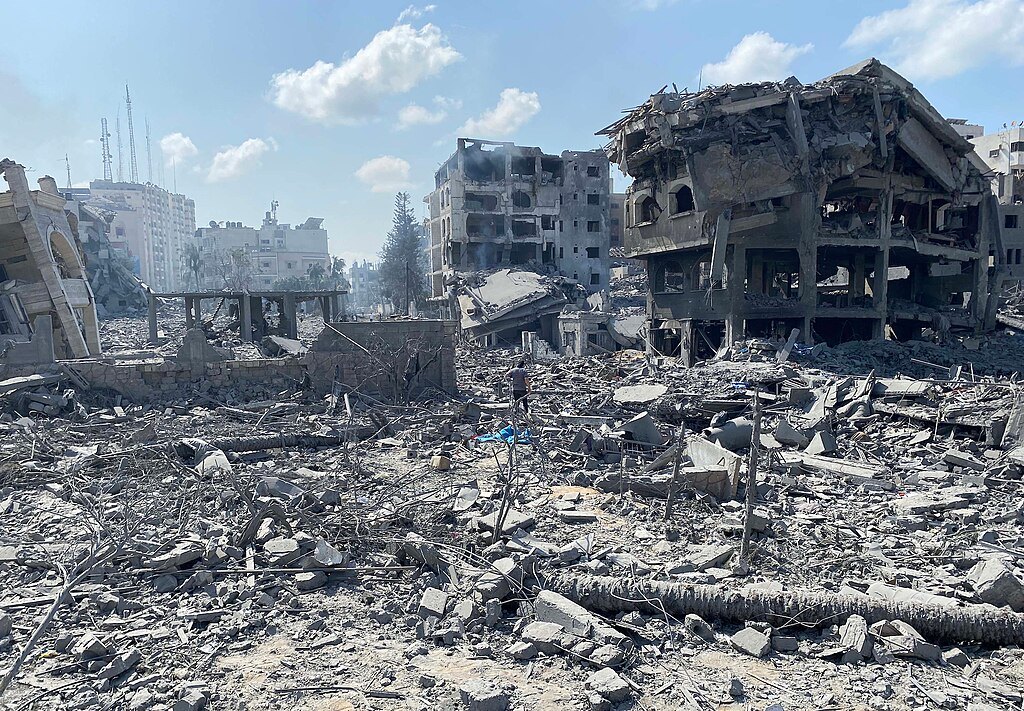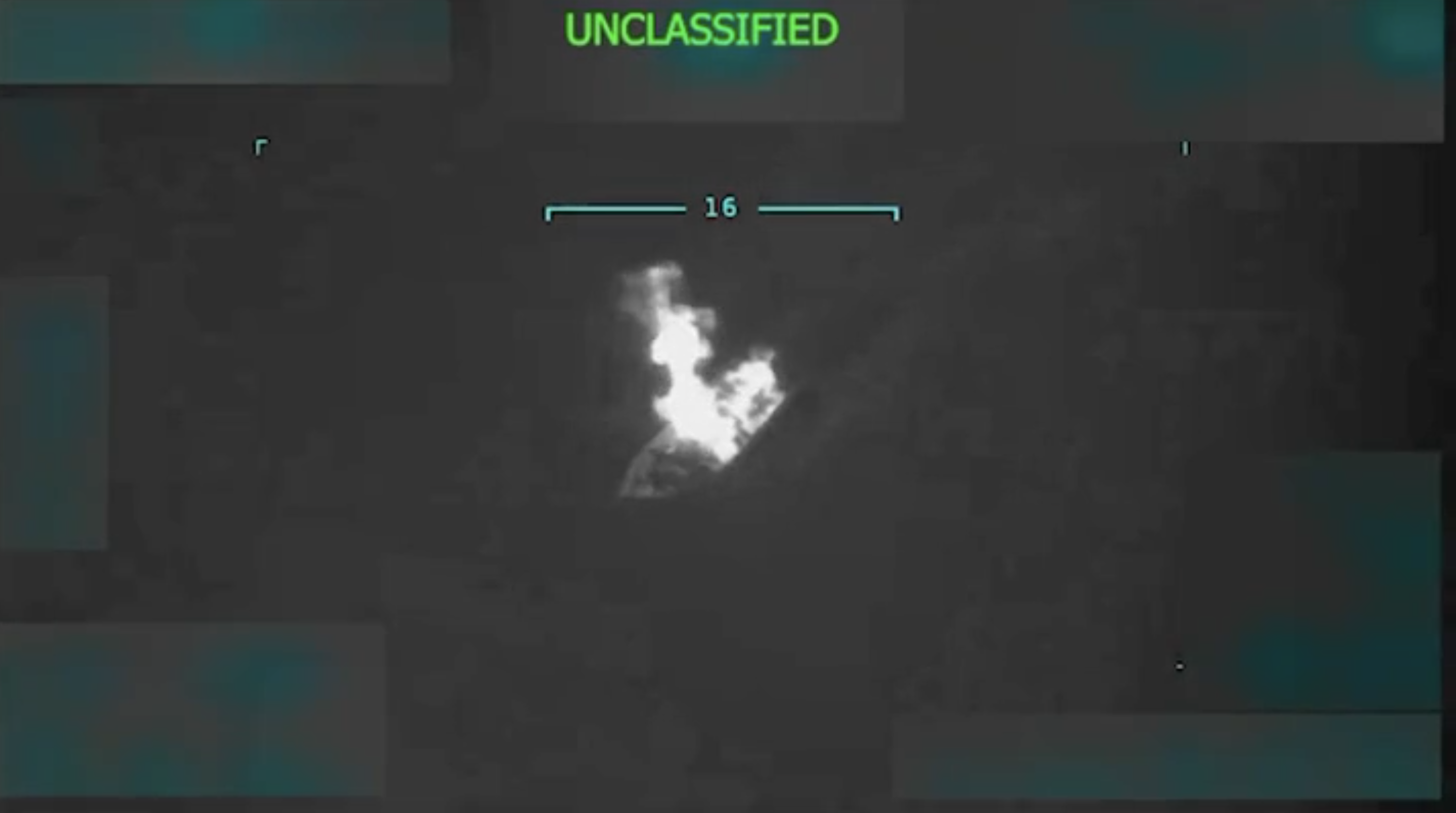Making Sense of Casualty Counts in the Israel-Hamas War
All civilian casualties in this war are tragic. But context, intentions, and legal duties tell us which are violations of the laws and ethics of war.

Published by The Lawfare Institute
in Cooperation With

The brutality of Hamas’s Oct. 7 massacre shocked even seasoned terrorism-watchers. In one day, Hamas terrorists massacred more than 1,200 Israelis, mostly civilians. It has indiscriminately fired thousands of rockets at Israeli cities and towns. More than 200 hostages, including many children, remain captive in what must be nightmarish conditions beneath Gaza. Hamas has vowed to murder them if Israel continues its military response.
The initial shock of the atrocities elicited strong statements of support for Israel from President Biden, Secretary of State Antony Blinken, the White House press secretary, the leaders of Germany and France, and other world leaders.
Yet media coverage of Israel’s war against Hamas has already shifted from the brutality of Hamas’s onslaught to the proportionality of Israel’s response. The number of unintended civilian casualties has risen steadily as a ground offensive, supported by airstrikes, has advanced. Major outlets have featured chyrons juxtaposing the number of deaths on each side. As Israel enters Gaza in force, comparisons will inevitably show higher counts on the Palestinian side.
Does this mean that Israel’s response is excessive or disproportionate? That Hamas’s brutality has already been repaid like-for-like and, thus, that Israel must stop?
Every innocent victim is a tragedy. But not every civilian death in war is evidence of illegal conduct by one of the parties. The law of war operates in an environment that is inherently brutal and tragic. Law cannot banish that brutality altogether. It aims, more modestly, to mitigate war’s cruelty by balancing military necessity with humanitarian aims.
International humanitarian law’s most powerful instrument for protecting innocents is separating combatants from civilians. Armed forces cannot target civilians. And they must separate their own military assets from the civilian population.
It is Hamas’s defiance of both of those rules that has made each successive phase of this war a humanitarian catastrophe.
Crimes Versus Tragedies: Unpacking Casualty Counts
On one level, casualty comparisons are intuitive: All lives have inherent worth. All innocent suffering merits sympathy.
Yet casualty counts are a poor way to understand a conflict like this one. That is because they commingle deaths that are viewed very differently by the laws and ethics of warfare. Most of the Israeli toll thus far consists of civilians intentionally targeted by Hamas—a stark violation of the law of armed conflict.
The growing civilian toll on the Palestinian side is tragic, and all should hope that Hamas is defeated with the least possible innocent suffering. But incidental civilian casualties in strikes on lawful Hamas targets can be consistent with the laws of war. And Hamas itself is responsible for many of those civilian deaths because it cynically keeps or places civilians near military targets and uses civilian objects for military purposes.
Unintended civilian deaths and intentional murders are alike only in the very narrow sense that, in both cases, people have died from the actions of an armed force. Yet common intuition tells us that if we wish to form legal and moral judgments, then context, intentions, and legal duties matter.
Hamas’s Actions
The “cardinal,” “intransgressible” principle of the law of armed conflict is that armed forces must distinguish between combatants and civilians.
In its application to offensive operations, the principle of “distinction” holds that civilians can never be targeted, no matter how much military advantage would be gained by doing so. Hamas has ignored this principle throughout the Israel-Hamas conflict. As it always has. Not for nothing has Hamas been designated as a terrorist organization by the United States and other governments for decades.
Most of the Israelis killed in Hamas’s Oct. 7 rampage were unarmed civilians killed in cold blood in Israeli towns and kibbutzim and at the temporary rave encampment. These killings and other atrocities against civilians are unequivocally illegal. They are not legitimate acts of war.
Since Oct. 7, a smaller number of Israelis have been killed by rockets fired by Hamas. For legal purposes, the key question here is: fired at what?
Hamas, like Russia, indiscriminately bombards civilian areas, which are not valid targets. Indeed, Hamas does not even claim to be aiming for military objectives. Like the massacres of civilians on Oct. 7, deaths from those indiscriminate bombardments also result from Hamas’s violations of the laws of war.
Military personnel are generally valid targets. It bears noting, however, that Hamas does not follow basic legal rules even when attacking military targets. For example, videos and photos of Oct. 7 show that its combatants rarely distinguish themselves from civilians by wearing a distinctive uniform or insignia—in legal argot, a “fixed distinctive sign recognizable at a distance.”
The requirement that combatants (including insurgent groups and militias) wear a distinguishing uniform or mark protects civilians from being fired upon in confusion by the other side. As elaborated below, Hamas’s ignoring that rule puts Palestinian civilians in further danger.
Hamas has also committed grave breaches of the law of armed conflict by seizing Israeli civilians as hostages. Under the law of armed conflict, combatants can be taken prisoner and held for the duration of hostilities, and enemy civilians can be interned in rare instances. In both cases, however, their humane treatment is strictly required by international law and the rationale for their detention must be purely preventive.
By contrast, hostage-taking to “compel a third party to do or to abstain from doing any act”—as Hamas continues to do—is a war crime.
Deaths of Palestinian Civilians in Israel’s Response
The first thing to be said here is that every death of a Palestinian civilian is a human tragedy. Palestinians trapped in Gaza, in the grip of a brutal terrorist group that brooks no opposition to its unpopular misrule, had no say in whether to launch this war. Yet it is civilians who suffer most for Hamas’s choice. Indeed, Hamas cynically increases and then broadcasts civilian suffering to erode international support for Israel’s military response.
The question here is how observers should categorize those deaths, and whether it makes sense legally and morally to juxtapose them with the Israeli civilians intentionally murdered and bombarded by Hamas.
The Israel Defense Forces and Distinction
Israeli forces operating in Gaza may attack only military objectives. Military objectives include enemy combatants, civilians directly participating in hostilities (a complex category best left aside for now), and “military objects.”
Importantly, military objects include not just overt military installations but also “objects which by their nature, location, purpose or use make an effective contribution to military action and whose total or partial destruction, capture or neutralization … offers a definite military advantage” (emphasis added).
That means that a nominally civilian building (or even a medical vehicle) can become a military object if Hamas uses it for military purposes. And Hamas regularly uses civilian areas to store weapons, to house command centers, and for other military aims.
Intentionally targeting a civilian object not being used for military purposes would, of course, violate the principle of distinction. (We’ll come to two additional legal requirements, precautions and proportionality, below.) Establishing that, however, requires granular knowledge of both the factual context—was Hamas, for example, using that building to store weapons?—and the commander’s state of mind.
Hamas and Distinction
The principle of distinction also imposes duties on the defender. Parties to a conflict must take “all feasible precautions to protect the civilian population and civilian objects under their control against the effects of attacks.”
In this conflict, Hamas has an affirmative legal duty to protect Palestinian civilians by “remov[ing] them,” to the extent feasible, “from the vicinity of military objectives.”
Hamas will not do that, of course.
Not because it is infeasible. Hamas, which has governed the Gaza Strip for years, could have designated certain places in the strip as military enclaves and concentrated its fortifications, bunkers, weapons stores, fuel depots, rocket bases, and command centers there. It could have encouraged civilians to evacuate areas around those bases, rather than forcing them to stay put. Indeed, when the Israel Defense Forces tried to encourage civilians to move away from military targets, Hamas discouraged and blocked them from doing so, according to senior White House officials.
Hamas will not separate civilians from its military activities because following the law would be disadvantageous for Hamas. Hamas uses civilian areas to hide its military assets and complicate the choices facing Israeli targeters: Israeli forces can either forgo the strike, leaving Hamas with the military asset, or Israel can launch it, whereupon Hamas publicizes the resulting civilian suffering.
Hamas is evil, but its leaders are no fools: These tactics work. A NATO report examining Hamas’s activities from 2008 to 2014 explains how Hamas’s use of human shields in Gaza has long created a dilemma for Israel:
If the IDF uses lethal force and causes an increase in civilian casualties, Hamas can utilise that as a lawfare tool: it can accuse Israel of committing war crimes, which could result in the imposition of a wide array of sanctions.
Alternatively, if the IDF limits its use of military force in Gaza to avoid collateral damage, Hamas will be less susceptible to Israeli attacks[.]
International reactions make this kind of “lawfare” effective. Hamas knows that credulous observers will attribute these casualties to Israel—even though it was Hamas’s illegal decision to hide military assets in civilian areas that exposed the victims to harm.
Failing to place blame where it belongs—to unequivocally insist that Hamas move its military assets away from civilians, and to hold it responsible if it does not—encourages Hamas to put even more civilians in harm’s way.
These cynical incentives for Hamas pervert the law’s humanitarian aims and put Palestinian civilians in greater danger.
How the Law of War Accounts for Unintended Civilian Casualties
Even when striking a legitimate military target, Israel must consider the potential harm to civilians. But “zero harm to civilians” is not the rule: Strikes on military targets can result in unintended civilian casualties without necessarily violating the law of armed conflict. Tragically, because Hamas intentionally commingles civilians and military assets, there have been many such deaths in this war.
The key rule here is proportionality, which requires armed forces to refrain from attacks that would inflict incidental civilian harm “excessive in relation to the concrete and direct military advantage anticipated to be gained.”
Attacking forces must also take “feasible” precautions in attack to reduce the risk to civilians. This can include verifying the military nature of the target, assessing risk to civilians before the strike, providing advance warning to civilians, adjusting the timing of an attack, choosing more precise weapons, and so forth.
Proportionality and precautions are intensely fact-bound. Civilian harm, military advantage, and feasibility are difficult to quantify. Their application often depends on the circumstances on the ground, at a fleeting moment, during the chaos of war.
Reasonableness, not perfect hindsight, is the standard. After-the-fact assessments of proportionality must account for “variation in how reasonable persons would apply the principle of proportionality in a given circumstance” and “the information available to that person at the time.”
The precautions required also vary with the context. Feasibility considers “all circumstances ruling at the time, including humanitarian and military considerations.” Those military considerations include risks to one’s own troops and to the mission’s success: “[A] commander,” the U.S. Law of War Manual explains, “may determine that a precaution would not be feasible because it would result in increased operational risk (i.e., a risk of failing to accomplish the mission) or an increased risk of harm to his or her forces.”
Photographs of shattered buildings and injured or dead civilians tell us that a tragedy has taken place. But without further information—without specific evidence of Israeli misconduct in assessing proportionality and taking feasible precautions—it is impossible to declare that any given tragedy was also a violation of the laws of war.
The sad reality is that many civilian deaths will result when a technologically sophisticated force confronts a terrorist group that chooses to fight from densely populated civilian areas and compels civilians to stay in anticipated battle zones. That is true even if the organized military uses precision weapons and cares deeply about the law.
Hamas knows that, of course. It stores weapons in schools and launches rockets from civilian neighborhoods fully aware that Israeli strikes on those military assets will harm civilians. Why? Because it knows that international observers will blame Israel, eroding support for Israeli military action. Here again, Hamas perversely exploits proportionality’s humanitarian aims, intentionally putting Palestinian civilians in harm’s way to generate legal pressure on Israel.
The Meta-Question: Are the Laws of War the Right Rules?
This analysis rests on the premise that the laws of armed conflict are the right standard to apply to both parties’ conduct.
But are they?
Perhaps, as some contend, different rules should apply to each side. For instance, a group of academics at Columbia University has suggested that “one could regard” the atrocities of Oct. 7 as “an occupied people exercising a right to resist violent and illegal occupation.” (The letter goes on to say that “armed resistance by an occupied people must conform to the laws of war,” including the rule against internationally targeting civilians. But it studiously avoids acknowledging what follows from that concession: By that standard, one cannot in fact “regard” Hamas’s massacres as legitimate resistance.)
Should Hamas be allowed to place its missiles in schoolyards and its command centers under hospitals, if it thinks that will help it prevail?
Should different rules apply to the weak and the strong?
Advocates of that idea should consider what it would do to the centuries-long humanitarian quest to humanize warfare. To the struggle for what Texas Law Dean Bobby Chesney has called the “civilizationally relevant” idea that “it’s not right to intentionally try to kill innocents to advance your political or social goals.”
Without reciprocity, that project founders. The modern law of war rests on reciprocal agreements among states aimed at reducing unnecessary suffering on both sides—among combatants themselves, but also among civilians, prisoners of war, the injured and shipwrecked, and others outside the fight.
Those fundamental humanitarian prohibitions thus apply without regard to the justness of each side’s cause. In legal jargon: The jus in bello, which regulates the conduct of war, applies independently of the jus ad bellum, which governs the commencement of war. Even the controversial (in this respect) first Additional Protocol to the Geneva Conventions, which elevates in certain respects anti-colonial struggles, does not purport to grant “resistance” fighters the right to murder innocents or otherwise wage war without limits.
If modern law’s fundamental humanitarian guarantees are to endure, they must apply equally to all parties, with no exemption for “especially worthy” causes.
Which belligerent has ever admitted that its cause is unjust? Which people fighting for survival would accept that the law constrains them, but not their enemies?
No-holds barred for one side only is not a principle that can hold for long.
Indeed, there is a perverse irony in supporters of the weaker party disputing that the laws of war should apply equally to all.
It is the weak, not the strong, who benefit most from universal restraint. In a world where anything goes, why would the strong forbear from using their power to the utmost? The alternative to universal rules is not asymmetric justice in favor of the weak. It is a ruthless world in which “the strong do what they can and the weak suffer what they must.”
***
Acknowledging that the law of armed conflict is the right normative framework for both sides in this fight would benefit Palestinian civilians most of all.
If Hamas would keep civilians away from military emplacements and stop operating from within their midst, as the law requires, Hamas and the IDF could have it out with far fewer civilian casualties. In the Columbia professors’ words, Hamas could “resist” with less danger to the people on whose behalf it claims to fight.
Any “right to resist” beyond the law’s constraints, then, is nothing more than a right to murder Israeli civilians and to use Palestinian innocents as human camouflage.
The suffering civilians of the Middle East deserve better friends than these.




